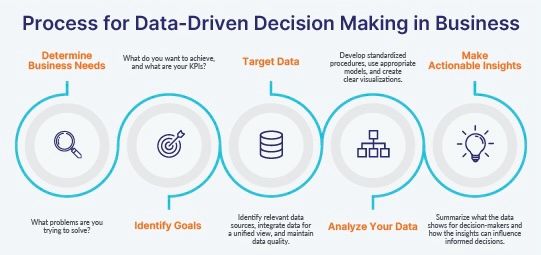Introduction
In today’s competitive business environment, executives rely heavily on data analytics tools to make informed and strategic decisions. The right tools empower management teams to understand patterns, forecast trends, and optimize operations. At Singleclic, a leading IT solutions provider since 2013, we help organizations integrate executive analytics tools that transform data into actionable insights, driving smarter business outcomes.
Understanding Executive Analytics Tools
Executive analytics tools are platforms designed to provide high-level visibility into company performance. They help leaders monitor KPIs, analyze data from multiple sources, and make quick, informed decisions. These tools combine descriptive, diagnostic, predictive, and prescriptive analytics — the four main types of business analytics — to deliver a comprehensive understanding of an organization’s health and direction.
Types of Analytics Used in Business
Descriptive Analytics
Descriptive analytics summarizes historical data to show what has happened in the past. Dashboards and reports fall into this category, helping executives track progress and spot recurring patterns.
Diagnostic Analytics
This type digs deeper into why certain events occurred. By identifying correlations and causal relationships, managers can address inefficiencies or performance gaps effectively.
Predictive Analytics
Predictive analytics uses statistical models and machine learning to forecast future outcomes. For executives, this is key to planning budgets, managing risks, and predicting customer behavior.
Prescriptive Analytics
The most advanced form of analytics, prescriptive tools recommend actions based on predictive data. They use AI-driven simulations to propose the best strategies for achieving business goals.
Benefits of Executive Analytics Tools for Management
1. Real-Time Decision-Making
Executives no longer need to rely on outdated reports. Analytics dashboards update in real-time, allowing for quicker responses to market changes.
2. Centralized Data Access
By integrating data from CRM, ERP, and other systems, managers gain a holistic view of business performance through a single interface.
3. Improved Forecast Accuracy
Predictive models analyze trends and historical data, enabling executives to forecast sales, expenses, and operational challenges with greater precision.
4. Enhanced Collaboration
Modern analytics platforms promote collaboration among departments, ensuring that every decision aligns with organizational objectives.
Top Executive Analytics Tools
1. Microsoft Power BI
A powerful tool that transforms raw data into interactive visual dashboards, enabling executives to monitor KPIs and performance metrics easily.
2. Tableau
Known for its user-friendly interface and strong visualization capabilities, Tableau allows management teams to explore and understand data dynamically.
3. Google Data Studio
A free yet powerful tool for integrating and visualizing data from multiple sources like Google Analytics, Ads, and Sheets.
4. SAP BusinessObjects
A robust enterprise-level analytics solution tailored for complex data environments, providing real-time insights and scalability.
The Role of Singleclic in Business Intelligence
Since 2013, Singleclic has been a trusted partner for enterprises across the Arab world, offering end-to-end IT and data analytics solutions.
Our services include:
- Software Development: Custom ERP, CRM, and low-code solutions for business automation.
- Cybersecurity: Protecting systems against modern digital threats.
- Cloud Hosting: Secure, high-performance hosting and cloud-native services.
- 24/7 Technical Support: Dedicated assistance ensuring system uptime and performance.
We help companies implement and optimize analytics systems that drive smarter management and measurable growth.
👉 Learn more about our data analytics and decision intelligence solutions here.
Conclusion
Executive analytics tools are no longer optional—they’re a necessity for modern business management. They transform data into strategic power, enabling executives to make fast, informed, and confident decisions.
With Singleclic’s tailored analytics and IT services, organizations can unlock the full potential of their data to achieve smarter, more agile management.
People Also Ask
What are the 4 types of analytics used in business?
They are descriptive, diagnostic, predictive, and prescriptive analytics.
What are BI tools used for?
BI (Business Intelligence) tools collect, process, and visualize data to help managers make data-driven decisions.
What are analytics tools?
They are software applications designed to collect and analyze data, revealing insights that guide business strategies.
What are the three management tools?
The most common management tools include BI dashboards, CRM systems, and project management software.
📞 Contact Singleclic:
Egypt: +2 010 259 99225
UAE: +971 42 475421
KSA: +966 58 1106563
🌐 https://singleclic.com/









